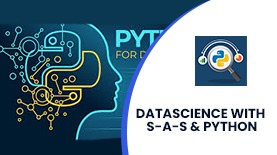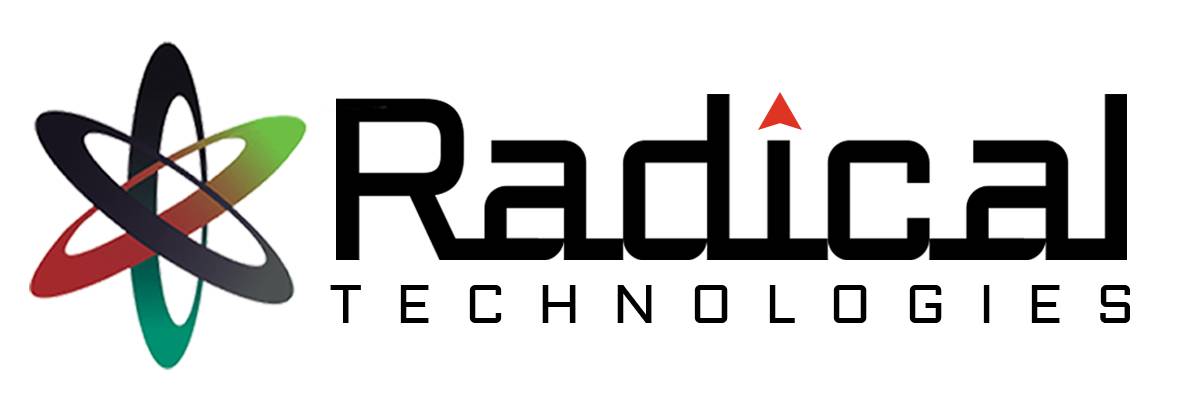- Home
- About Us
- Courses
- Combo Courses
- Programming Combo Courses
- Non Programming Combo Courses
- Linux & Cloud Combo
- Linux & DBA Combo
- AWS & Devops Combo
- Salesforce Combo
- Azure Admin Combo
- Azure Cloud & Azure Devops Combo
- Tableau Informatica Combo
- Power BI Informatica Combo
- Power BI & MSBI Combo
- Salesforce Manual Testing Combo
- Salesforce Tableau Combo
- Data Analytics Combo
- MCSA Azure Combo
- Powerplatform Combo
- ADF & Power BI Combo
- BA & Tableau Combo
- PG Diploma
- Online Schedule
- Offline schedule
- Job Openings
- Certifications
- Contact Us
DATASCIENCE WITH S-A-S & PYTHON

Satisfied Learners
Data Science With S-A-S & Python Training in Pune
Learn Data Science with S-A-S . 25+ Live Projects
Duration : 100 Hrs | 5 Major Projects | 10 Minor Projects | 100 + Assignments
Data Sets , installations , Interview Preparations , Repeat the session until 6 months are all attractions of this particular course
Trainer :- Experienced Data Science Consultant
Why Radical Technologies
Want to be Future Data Scientist
Introduction: This course does not require a prior quantitative or mathematics background. It starts by introducing basic concepts such as the mean, median mode etc. and eventually covers all aspects of an analytics (or) data science career from analysing and preparing raw data to visualizing your findings. If you’re a programmer or a fresh graduate looking to switch into an exciting new career track, or a data analyst looking to make the transition into the tech industry – this course will teach you the basic to Advance techniques used by real-world industry data scientists.
Data Science, Statistics with S-A-S This course starts with Data Science and Statistics using Python and then complete knowledge of Data Science with S-A-S. It covers both the aspects of Statistical concepts and the practical implementation using S-A-S. If you’re new to Programming , don’t worry – the course starts with a crash course to teach you all basic programming concepts. If you’ve done some programming before or you are new in Programming, you should pick it up quickly. This course shows you how to get set up on Microsoft Windows-based PC’s; the sample code will also run on Mac OS or Linux desktop systems.
Analytics: Using S-A-S you can analyze and explore your data in an interactive environment with fast feedback. The course will show how to leverage the power of RDDs and Data frames to manipulate data with ease.
Real life examples: Every concept is explained with the help of examples, case studies and source code wherever necessary. The examples cover a wide array of topics and range from A/B testing in an Internet company context to the Capital Asset Pricing Model in a finance context.
Target audience?
- Engineering/Management Graduate or Post-graduate Fresher Students who want to make their career in Data Science Industry or want to be future Data Scientist.
- Engineers who want to use a distributed computing engine for batch or stream processing or both
- Analysts who want to leverage Spark for analyzing interesting datasets
- Data Scientists who want a single engine for analyzing and modelling data
- MBA Graduates or business professionals who are looking to move to a heavily quantitative role.
- Engineering Graduate/Professionals who want to understand basic statistics and lay a foundation for a career in Data Science
- Working Professional or Fresh Graduate who have mostly worked in Descriptive analytics or not work anywhere and want to make the shift to being data scientists
- Professionals who’ve worked mostly with tools like Excel and want to learn how to use R for statistical analysis.
DATA SCIENCE WITH S-A-S COURSE CONTENT
Introduction To Analytics
- Analytics World
- Introduction to Analytics
- Concept of ETL
- S-A-S in advanced analytics
- Global Certification: Induction and walk through
- Getting Started
- Software installation
- Introduction to GUI
- Different components of the language
- All programming windows
- Concept of Libraries and Creating Libraries
- Variable Attributes – (Name, Type, Length, Format, In format, Label)
- Importing Data and Entering data manually
- Understanding Datasets
- Descriptor Portion of a Dataset (Proc Contents)
- Data Portion of a Dataset
- Variable Names and Values
- Data Libraries
Base S-A-S – Accessing The Data
- Understanding Data Step Processing
- Data Step and Proc Step
- Data step execution
- Compilation and execution phase
- Input buffer and concept of PDV
- Importing Raw Data Files
- Column Input and List Input and Formatted methods
- Delimiters, Reading missing and non standard values
- Reading one to many and many to one records
- Reading Hierarchical files
- Creating raw data files and put statement
- Formats / Informat
- Importing and Exporting Data (Fixed Format / Delimited)
- Proc Import / Delimited text files
- Proc Export / Exporting Data
- Datalines / Cards;
- Atypical importing cases (mixing different style of inputs)
- Reading Multiple Records per Observation
- Reading “Mixed Record Types”
- Sub-setting from a Raw Data File
- Multiple Observations per Record
- Reading Hierarchical Files
- Concept of SAS library and SAS Catalog
- Variable Types in SAS
- Reading Data stored external to SAS
- Importing Data by using Proc Import
- Data Step SAS statements
- SAS Functions
- Appending and Merging using SAS
- SAS Procedures like proc means, proc Univariate, proc append, proc freq and proc export.
- SAS SQL
- SAS Macros
Hypothesis Testing and ANOVA
- One Sample t-test of comparing means
- Two Sample t-test of comparing means
- One Way ANOVA
- Assumptions of ANOVA Modeling
- n-way ANOVA
- ANOVA Post Hoc Studies
Measure Model Performance
- Apply the principles of honest assessment to model performance measurement
- Assess classifier performance using the confusion matrix
- Model selection and validation using training and validation data
- Create and interpret graphs (ROC, lift, and gains charts) for model comparison and selection
- Establish effective decision cut-off values for scoring
Data Understanding, Managing And Manipulation
- Understanding and Exploration Data
- Introduction to basic Procedures – Proc Contents, Proc Print
- Understanding and Exploration Data
- Operators and Operands
- Conditional Statements (Where, If, If then Else, If then Do and select when)
- Difference between WHERE and IF statements and limitation of WHERE statements
- Labels, Commenting
- System Options (OBS, FSTOBS, NOOBS etc…)
- Data Manipulation
- Proc Sort – with options / De-Duping
- Accumulator variable and By-Group processing
- Explicit Output Statements
- Nesting Do loops
- Do While and Do Until Statement
- Array elements and Range
- Combining Datasets (Appending and Merging)
- Concatenation
- Interleaving
- Proc Append
- One To One Merging
- Match Merging
- IN = Controlling merge and Indicator
Data Mining With Proc SQL
- Introduction to Databases
- Introduction to Proc SQL
- Basics of General SQL language
- Creating table and Inserting Values
- Retrieve & Summarize data
- Group, Sort & Filter
- Using Joins (Full, Inner, Left, Right and Outer)
- Reporting and summary analysis
- Concept of Indexes and creating Indexes (simple and composite)
- Connecting S-A-S to external Databases
- Implicit and Explicit pass through methods
Macros For Automation
- Macro Parameters and Variables
- Different types of Macro Creation
- Defining and calling a macro
- Using call Symput and Symget
- Macros options (mprint symbolgen mlogic merror serror)
Fundamental Of Statistics
- Basic Statistics – Measures of Central Tendencies and Variance
- Building blocks – Probability Distributions – Normal distribution – Central Limit Theorem
- Inferential Statistics -Sampling – Concept of Hypothesis Testing
- Statistical Methods – Z/t-tests( One sample, independent, paired), Anova, Correlations and Chi-square
- Levels of Measurement and Variable types
- Descriptive Statistics and Picturing Distributions
- Confidence Interval for the Mean
Introduction To Predictive Modelling
- Introduction to Predictive Modeling
- Types of Business problems – Mapping of Techniques
- Different Phases of Predictive Modeling
Data Preparation
- Need of Data preparation
- Data Audit Report and Its importance
- Consolidation/Aggregation – Outlier treatment – Flat Liners – Missing values- Dummy creation – Variable Reduction
- Variable Reduction Techniques – Factor & PCA Analysis
Segmentation
- Introduction to Segmentation
- Types of Segmentation (Subjective Vs Objective, Heuristic Vs. Statistical)
- Heuristic Segmentation Techniques (Value Based, RFM Segmentation and Life Stage Segmentation)
- Behavioural Segmentation Techniques (K-Means Cluster Analysis)
- Cluster evaluation and profiling
- Interpretation of results – Implementation on new data
Linear Regression
- Introduction – Applications
- Assumptions of Linear Regression
- Building Linear Regression Model
- Understanding standard metrics (Variable significance, R-square/Adjusted R-square, Global hypothesis ,etc)
- Validation of Models (Re running Vs. Scoring)
- Standard Business Outputs (Decile Analysis, Error distribution (histogram), Model equation, drivers etc.)
- Interpretation of Results – Business Validation – Implementation on new data
Logistic Regression
- Introduction – Applications
- Linear Regression Vs. Logistic Regression Vs. Generalized Linear Models
- Building Logistic Regression Model
- Understanding standard model metrics (Concordance, Variable significance, Hosmer Lemeshov Test, Gini, KS, Misclassification, etc)
- Validation of Logistic Regression Models (Re running Vs. Scoring)
- Standard Business Outputs (Decile Analysis, ROC Curve,
Probability Cut-offs, Lift charts, Model equation, Drivers, etc) - Interpretation of Results – Business Validation -Implementation on new data
Time Series Forecasting
- Introduction – Applications
- Time Series Components( Trend, Seasonality, Cyclicity and Level) and Decomposition
- Classification of Techniques(Pattern based – Pattern less)
- Basic Techniques – Averages, Smoothening, etc
- Advanced Techniques – AR Models, ARIMA, etc
- Understanding Forecasting Accuracy – MAPE, MAD, MSE, etc
Introduction To Machine Learning
- Statistical learning vs. Machine learning
- Major Classes of Learning Algorithms -Supervised vs Unsupervised Learning
- Concept of Overfitting and Under fitting (Bias-Variance Trade off) & Performance Metrics
- Types of Cross validation(Train & Test, Bootstrapping, K-Fold validation etc)
Regression & Classification Model Building
- Recursive Partitioning(Decision Trees)
- Ensemble Models(Random Forest, Bagging & Boosting)
- K-Nearest neighbours
Learn Datascience With S-A-S & Python – Course in Pune with Training, Certification & Guaranteed Job Placement Assistance!
Online Batches Available for the Areas
Ambegaon Budruk | Aundh | Baner | Bavdhan Khurd | Bavdhan Budruk | Balewadi | Shivajinagar | Bibvewadi | Bhugaon | Bhukum | Dhankawadi | Dhanori | Dhayari | Erandwane | Fursungi | Ghorpadi | Hadapsar | Hingne Khurd | Karve Nagar | Kalas | Katraj | Khadki | Kharadi | Kondhwa | Koregaon Park | Kothrud | Lohagaon | Manjri | Markal | Mohammed Wadi | Mundhwa | Nanded | Parvati (Parvati Hill) | Panmala | Pashan | Pirangut | Shivane | Sus | Undri | Vishrantwadi | Vitthalwadi | Vadgaon Khurd | Vadgaon Budruk | Vadgaon Sheri | Wagholi | Wanwadi | Warje | Yerwada | Akurdi | Bhosari | Chakan | Charholi Budruk | Chikhli | Chimbali | Chinchwad | Dapodi | Dehu Road | Dighi | Dudulgaon | Hinjawadi | Kalewadi | Kasarwadi | Maan | Moshi | Phugewadi | Pimple Gurav | Pimple Nilakh | Pimple Saudagar | Pimpri | Ravet | Rahatani | Sangvi | Talawade | Tathawade | Thergaon | Wakad


